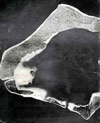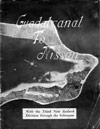|
|
|
|
| Missing In Action (MIA) | Prisoners Of War (POW) | Unexploded Ordnance (UXO) |
| Chronology | Locations | Aircraft | Ships | Submit Info | How You Can Help | Donate |
|
  New Zealand Army c1944  USN January 30, 1944  2006 via NZ Police |
Location Lat 4 32' 0S Long 154 13' 60E Nissan Island is the largest island in the Green Island Atoll bordering Green Island Lagoon to the northwest. Borders Belil Island to the north. Surrounded by the Pacific Ocean on all seaward sides with rocky cliffs approximately 120' in elevation. Located approximately 60 nautical miles northwest of Buka Island. During the Pacific War, the Allies erroneously referred to Nissan Island as "Green Island". Also incorrectly spelled "Nissian" in some wartime references. Today, Nissan Island is part of Nissan Rural Local Level Government (Nissan Rural LLG), North Bougainville District, Autonomous Region of Bougainville (Bougainville Province), Papua New Guinea (PNG). Prewar During the late 1890s, Germans planted two copra plantation on Nissan that operated until World War I. After 1918, the plantations were taken over by Australians and continued to operate until the the start of the Pacific War. Also, Marist missionaries from the Catholic Church built a church, school and dispensary on Nissan Island. They also established Tangalan Plantation where Nissan Airfield was built during 1944. Wartime History During early 1942, Nissan lagoon (Green Island) was used as a seaplane operating area by the Japanese. During March 1942 the Japanese occupied the Nissan Island. As the war progressed, it was used as barge station in the supply line from Rabaul to Bougainville. As American bombing increased, Japanese barges would hide in the Green Island area during daylight hours before moving southward at night. Allied missions against Nissan Island (Green Island) January 1942–February 10, 1944 On January 30, 1944 during the night, a raiding party of 300 soldiers, mostly from the New Zealand Army, 30 Battalion landed on Nissan Island. After reconnoitering for 24 hours, the group was withdrawn by sea having suffered five killed and ten wounded. Afterwards, U.S. Navy "frogmen" from Navy Combat Demolition Unit 4 (NCDU 4) and Navy Combat Demolition Unit 5 (NCDU 5) clear underwater obstacles from the landing area. On February 15, 1944 American personnel plus the 3rd New Zealand Division (less the 8th Brigade) land on Nissan as part of Operation Square Peg. At the time of the landing, only about 500 Japanese base troops were on Nissan, the rest had withdrawn to Feni Island. The remaining Japanese fought to the death with none surrendering. On February 23, 1944 organized Japanese resistance ceased but mopping up operations continued until the end of the month. Immediately afterwards, US Navy Construction Battalion "Seabees" developed Nissan Airfield and a base area to support aerial operations against Rabaul. During 1944, several famous Americans were stationed or visited Nissan Island including U.S. Navy (USN) Lt. Richard M. Nixon, Officer in Charge of the Combat Air Transport Command (CATC) on Nissan (Green) who later became the 37th President of the United States (POTUS) during 1969-1974. Between May 22 - June 10, 1944, Charles Lindbergh flew 13 combat mission with a U.S. Marine Corps (USMC) F4U Corsair squadron based at Green (Nissan) and Emirau and participated in combat mission to escort TBF Avengers over Rabaul and strafing ground targets. On August 1-2, 1944 Bob Hope preformed on Nissan. On August 15, 1944 Jack Benny also performed on Nissan. Until early June 1944, New Zealand troops remained on Nissan before withdrawing to New Caledonia. During July 1945, the last Allied personnel departed the Green Island for Guiuan Airfield (Samar). Everything left on the island was destroyed or abandoned and the island was returned to the native inhabitants. After the war a vast quantity of supplies were dumped and thousands of drums of fuel were sold to locals for US $0.13 a liter. Nissan Airfield (Green Island Airfield, Nissan Island Airfield) Includes Lagoon Airfield (Fighter Strip) and Ocean Airfield (Bomber Strip) still in use today Green Island PT Boat Base (Nissan) PT Boat base with shore facilities on Nissan Island (Green Island) Green Island Cemetery (Nissan) Allied cemetery on Nissan Island for war dead and air crews. By 1945 all the Allied graves were exhumed and transported to other cemeteries for consolidation. South Point Located at the southeastern tip of Nissan Island. Pokonian Village at the northwestern edge of Nissan Island. Tanaheran Village located on the southwest corner of Nissan Island. Propeller There is a large propeller under the large tree at 'the station' just near the working airfield. No significant damage or markings on the propeller which stands about four feet high. Unexploded Aerial Bomb During 2006, other members of the Royal New Zealand Police liaison team were escorted to another part of the island to view a WWII relic. The relic was an unexploded bomb on top of the ground. It was said to have no fins and appeared to be a large air bomb. With no map or sense of direction in this new place no accurate record can be given of the location. Contribute
Information Last Updated
|
Map 1944 |
| Discussion Forum | Daily Updates | Reviews | Museums | Interviews & Oral Histories |
|